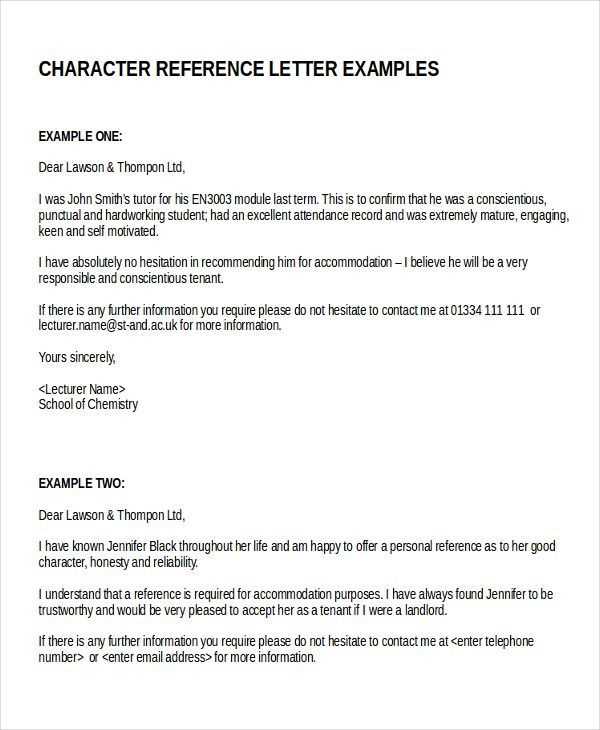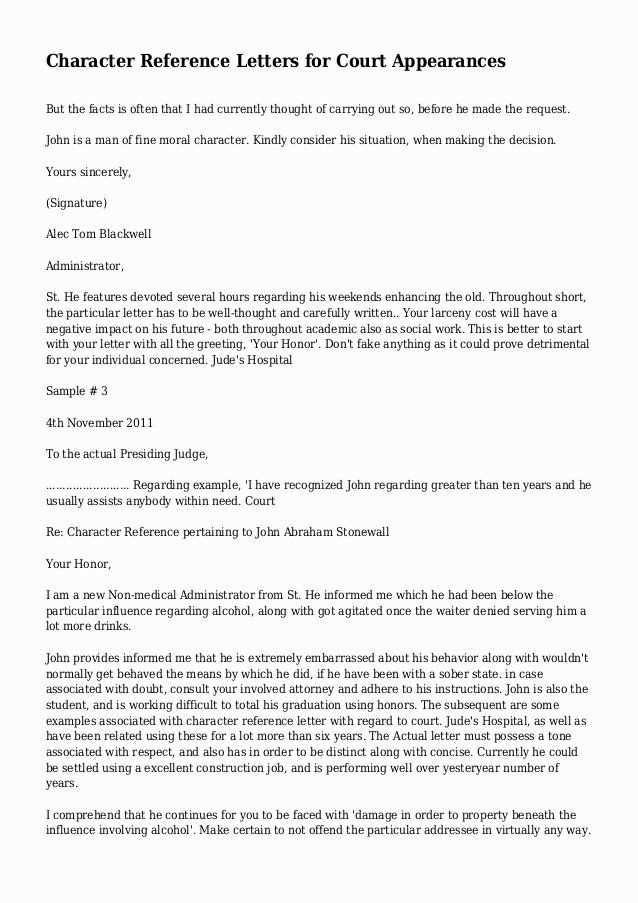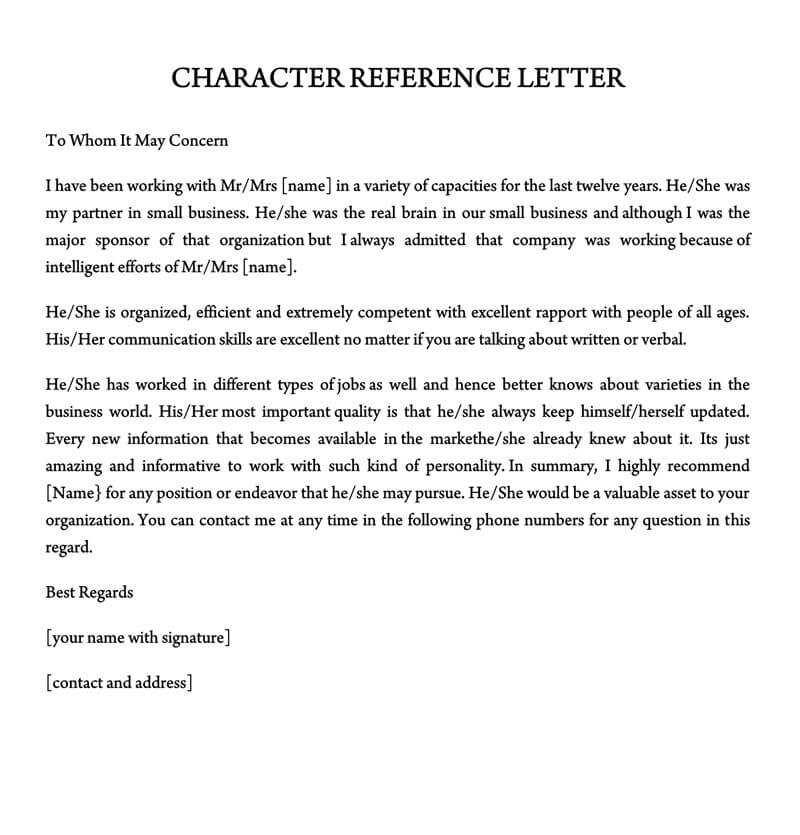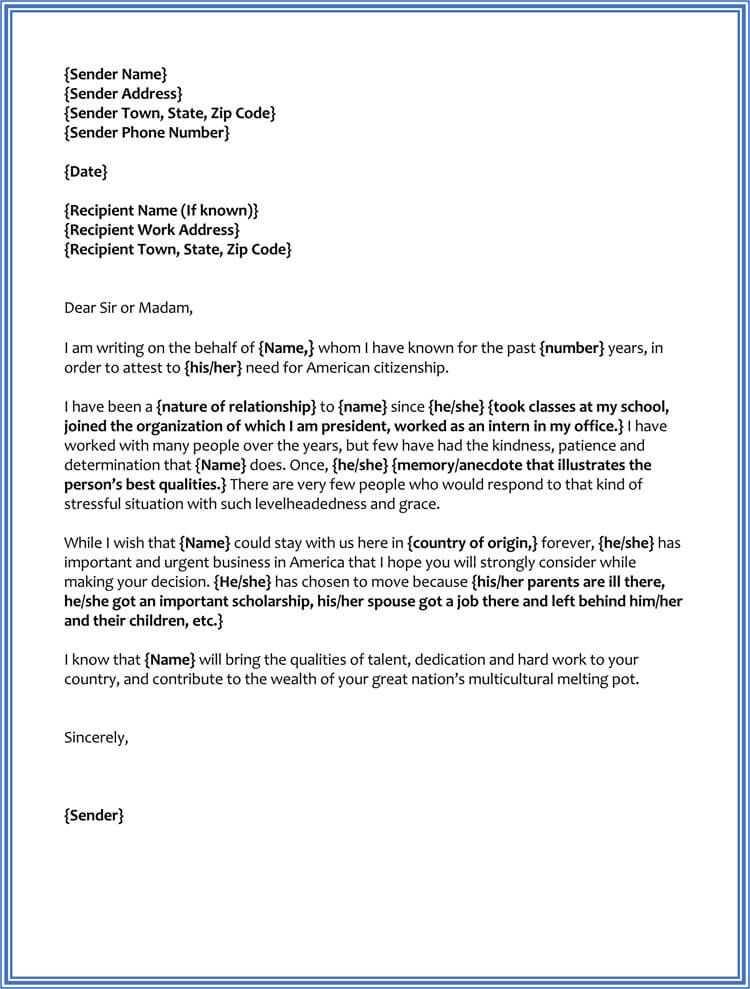Letter of Character Reference for Court Template Guide

When involved in legal proceedings, a well-crafted statement from someone who knows the defendant personally can be a valuable asset. This kind of document can highlight the individual’s positive traits, showcasing their character in a meaningful way. It serves as a tool for influencing the perspective of the judge or jury, often making a significant impact on the outcome of the case.
Writing such a document requires attention to detail and a clear structure. The goal is to provide a genuine and sincere portrayal of the individual’s character, demonstrating their trustworthiness, integrity, and the contributions they make to their community. A thoughtfully composed statement can help the reader gain insight into the person’s background and present a balanced view of their life beyond the legal matter at hand.
Understanding Supportive Legal Documents
In legal proceedings, individuals who know the defendant personally can provide insight into their moral qualities, behavior, and contributions to society. These statements are meant to offer a more comprehensive view of the person beyond the allegations or charges they may be facing. Such documents hold value by presenting a balanced portrayal of the defendant, which can potentially influence the legal outcome in their favor.
Purpose and Impact

The primary purpose of these documents is to highlight the positive aspects of an individual’s personality and actions. They are typically used to demonstrate the defendant’s good standing in the community and offer an alternative perspective to the formal evidence presented in the case. A well-written document can be influential in showing that the defendant is a person of integrity and reliability, potentially leading to a more lenient verdict.
Key Factors in Writing a Strong Document
When crafting a supportive statement, several key elements should be kept in mind. The content should be clear, specific, and focused on the defendant’s traits that can provide context to their actions. It should also be written by someone who has a credible relationship with the individual in question. Below are the important components that make these statements effective:
| Component | Description |
|---|---|
| Personal Connection | Details about the writer’s relationship with the individual. |
| Positive Traits | Focus on qualities such as honesty, responsibility, and community involvement. |
| Specific Examples | Provide real-life examples of the person’s good deeds and positive behavior. |
| Character Integrity | Highlight the individual’s moral fiber, including how they’ve handled challenges. |
Importance of Supportive Documents in Legal Proceedings
In many legal cases, the input of individuals who have a personal connection to the defendant can be a powerful tool. These types of statements can influence the perspective of the legal system, providing a more holistic view of the individual’s background, actions, and integrity. The value of such documents lies in their ability to humanize the defendant and demonstrate that they are more than the charges brought against them.
Why These Statements Matter
Supportive documents play a crucial role in highlighting an individual’s moral standing and the impact they have had on those around them. Judges and juries often rely on these testimonies to gain insight into the personal qualities of the defendant, which can significantly influence their decision-making. Key benefits include:
- Personal Insight: Provides a clearer picture of the individual’s true nature.
- Contextual Perspective: Offers additional context to the legal matter at hand.
- Humanizes the Defendant: Helps to portray the defendant as a person rather than just an accused.
- Influences Sentencing: May lead to a more lenient sentence or a favorable judgment.
Potential Impact on Legal Outcomes
These supportive statements can have a direct impact on the outcome of a case, particularly in sentencing or determining the severity of punishment. When presented effectively, they can offer a persuasive argument that the defendant is deserving of leniency or rehabilitation rather than punitive measures. In some cases, they can even sway the decision of the judge or jury, making them an essential element of legal proceedings.
How to Write a Supportive Legal Document
Creating a compelling and effective supportive document requires more than just writing a few kind words. It is about presenting a clear, structured, and honest portrayal of the individual. This type of statement must balance personal insight with professionalism, ensuring that it is not only heartfelt but also credible and relevant to the case at hand.
Essential Components to Include

To craft a persuasive statement, it is important to cover specific elements that will paint a well-rounded picture of the individual. Here are the key aspects to consider when drafting this type of document:
- Introduction: Briefly introduce yourself and explain how you know the individual.
- Personal Qualities: Highlight the positive traits of the person, such as honesty, integrity, and reliability.
- Relevant Examples: Provide specific instances where the individual demonstrated commendable behavior or made a positive impact.
- Conclusion: Summarize the key points and emphasize your belief in the person’s character and their ability to contribute positively in the future.
Tips for Writing Effectively

While writing, ensure that the tone is respectful, clear, and professional. Avoid exaggerating or making unrealistic claims. Focus on providing honest, specific examples that reinforce your points. Keep the document concise and to the point, staying within a reasonable length while making sure every section is meaningful and relevant to the case.
Key Elements to Include in the Document
When writing a document intended to support someone in legal proceedings, it is crucial to include specific components that clearly present the individual’s qualities and positive contributions. These elements ensure that the statement is not only personal and sincere but also effective in influencing the legal process. Structuring the document with these key factors will provide a clear and persuasive message to the reader.
Essential Components
The following are the core sections that should be included to create a complete and convincing document:
- Introduction: Clearly identify yourself and explain how you are connected to the individual. Establish the credibility of your relationship.
- Positive Qualities: Highlight the person’s strengths and virtues, such as their honesty, work ethic, and reliability.
- Specific Examples: Share concrete instances where the individual exhibited these qualities, demonstrating their trustworthiness and integrity.
- Closing Statement: Summarize your belief in the individual’s good character and potential, reinforcing why you support them in this matter.
Additional Considerations
While these are the essential components, the document should also be written in a tone that is respectful and professional. Avoid exaggerations, as they can undermine the credibility of the message. Instead, focus on providing clear, truthful, and relevant information that genuinely portrays the individual’s positive qualities.
Common Mistakes to Avoid in Legal Supportive Documents
Writing a supportive statement can be a powerful tool, but there are several common pitfalls that can weaken its effectiveness. Making these mistakes can undermine the document’s credibility or fail to convey the intended message. It is important to approach the writing process with attention to detail and avoid these errors to ensure the statement has the desired impact.
Exaggerating or Overpromising
One of the most significant mistakes is overstating the individual’s qualities or making unrealistic claims. It’s important to remain truthful and provide examples that accurately reflect the person’s behavior. Overly exaggerated statements can be perceived as insincere or manipulative, potentially harming the individual’s case rather than helping it.
Lack of Specific Examples
Another common issue is providing vague or generic statements without offering concrete examples. Rather than simply stating that the person is “kind” or “honest,” it is essential to include specific instances where the individual demonstrated these traits. This approach adds weight to the message and makes it more persuasive to the reader.
Avoiding these mistakes will help you write a more effective, truthful, and credible statement, ultimately increasing its impact in a legal setting. Stay focused on presenting accurate and relevant information to ensure that the document serves its purpose in a meaningful way.
Examples of Effective Legal Support Statements
Providing a well-crafted supportive statement can greatly influence the outcome of a legal case. When these documents are written thoughtfully, they can effectively highlight the individual’s positive attributes and their potential for rehabilitation or community contribution. Below are examples of how such statements can be structured to present a compelling case.
In an effective document, the writer begins by explaining their relationship with the individual and their credibility. They then focus on the person’s positive qualities, providing real-life examples of how those traits have been demonstrated. The document should conclude by reaffirming the individual’s value and their potential for positive change.
For instance, an effective statement might read: “I have known John for over 10 years through our volunteer work at the local shelter. His consistent dedication and compassion toward others are unmatched. On several occasions, John has gone above and beyond, organizing fundraising events and helping those in need. His integrity and sense of responsibility make him an asset to any community, and I have no doubt he will continue to contribute positively in the future.” This type of statement is specific, sincere, and highlights the individual’s behavior, making it much more impactful in the eyes of the legal system.